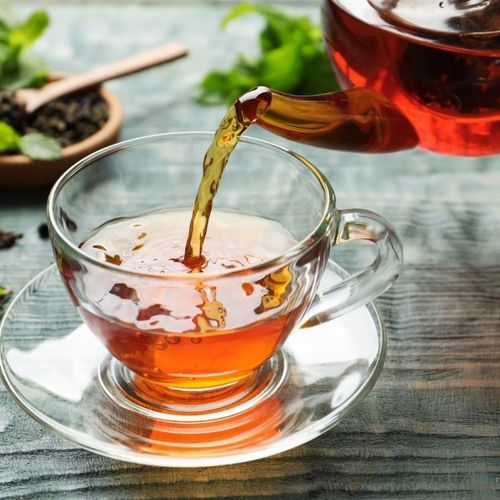The average American gets more than 100 colds in his/her lifetime, and scientists I have amassed a great deal of information about the common cold. But misinformation is still widely circulated as fact. Take the following quiz to see bow much you really know about the common cold...
True or False? Colds are mainly spread by coughs and sneezes.
False: The viruses that cause colds are usually spread by hand-to-hand, hand-to-nose or hand-to-object contact. The rhinovirus, the most common cold virus, flourishes in mucus membranes.
Someone who is infected with the virus rubs his nose or eyes, picking up the virus on his fingers. He then touches you or deposits the virus on a doorknob, telephone, etc. The virus can survive for 24 to 48 hours, so it can easily be picked up by the next person who comes along.
True or False? People who have colds are highly contagious before they experience symptoms.
True: You're most contagious in the 24 hours before symptoms start. You may feel healthy, but the virus is incubating-and spreading. Colds often are transmitted during this period because people who are infected aren't yet staying home-and other people aren't avoiding them the way they would someone who is coughing or sneezing.
True or False? Antimicrobial soap kills cold viruses.
False: Antimicrobial soap kills bacteria, not the viruses that cause colds. The best protection against colds is to wash your hands often using warm, soapy water. It takes approximately one minute of handwashing to remove viruses.
Waterless alcohol-based hand sanitizers can be helpful when soap and water aren't available. Hand sanitizers such as Purell and Nexcare kill cold viruses, as do disposable alcohol towelettes.
True or False? Being cold increases the risk of getting a cold.
False: Generations of moms have said, Bundle up or you'll catch a cold, but the best current evidence indicates that Mom was wrong.
In one well-regarded study, scientists divided volunteers into a "warm" group and a group that was damp and chilled. They exposed people in both groups to cold viruses' There was no difference in the incidence of subsequent colds between the two groups.
Opposing view: Ina study recently reported in Journal of Family Practice, scientists did find an increase in the number of colds in volunteers who soaked their feet in icy water for 20 minutes. This wasn't a controlled experiment, however. The scientists didn't know, for example, if the volunteers who got sick had more contact with people who already had colds than those who didn't get sick.
Cold weather brings an increase in colds, but being cold doesn't seem to be a factor.
True or False? Vitamin C has been proven to reduce the duration and/or severity of colds.
False: Ever since the publication of Linus Pauling's book Vitamin C and the Common Cold, millions of Americans have attempted to prevent and/or treat colds by taking enormous amounts of vitamin C-as much as 1,000 milligrams (mg) every few hours.
Since then, many studies have looked at the connection between colds and vitamin C. Most have been inconclusive-and many showed no benefit at all.
In large doses, vitamin C inhibits the effects of histamine, a body chemical that causes sniffles and other cold symptoms. yet there's no evidence that reducing histamine in this way has any effect on cold symptoms-and studies have not shown that it prevents colds.
Caution: Vitamin C is cleared through the kidneys. Taking large amounts can cause the vitamin to crystallize and result in kidney stones. Drink more water than usual if you decide to take extra vitamin C-and don't exceed 250 to 500 mg daily.
True or False? Yellow or green mucus indicates a serious infection.
False: People who develop yellow or greenish mucus often rush to their doctors to risk for antibiotics because they believe that discolored mucus indicates a serious bacterial infection.
Colds can cause either clear, watery mucus or mucus that's thick and discolored. The coloration means that there's inflammation and more white blood cells. These immune cells are present in both viral and bacterial infections.
Discolored mucus isn't a useful way to distinguish one from the other-and it doesn't mean that your cold is more serious or that it will last any longer.
True or False? We get fewer colds as we get older.
True: There are approximately 200 different viruses that cause colds. Each time your immune system is exposed to one of these viruses, it develops antibodies that make you immune to that particular strain. By the time you reach your 60s or 70s and have a lifetime of colds behind you, you have developed immunity to many-but not all-of the circulating cold viruses.
True or False? Stress increases the likelihood of getting a cold.
False: There are theoretical reasons to think that stress could raise the risk of getting a cold, but it has never been shown conclusively.
Studies have shown that chronic stress decreases the immune system's ability to suppress infections. But stress is ubiquitous-nearly everyone reports having stress in the days or weeks before a survey-so it's difficult to link it with illness.
True or False? Drinking hot tea eases cold symptoms.
True: Black and green tea both contain theophylline, a mild bronchodilator. Drinking tea when you have a cold may open the airways and make it easier to breathe. The heat and steam from the liquid also thin mucus and ease congestion.
Chicken soup is also a traditional remedy for colds-but don't expect too much. Though it provides extra fluids and the steam eases congestion, chicken soup cannot cure a cold.
